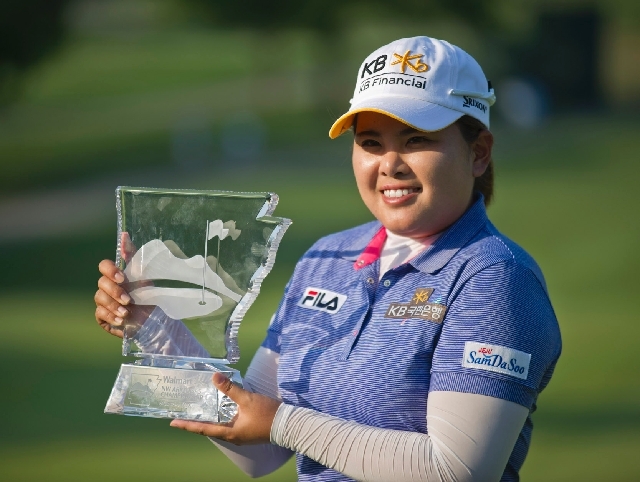Park at peace with her game, her world

SOUTHAMPTON, N.Y. — When Inbee Park became the youngest player to win the U.S. Women’s Open, she was 19, not very experienced at golf or at life.
She had much to figure out after a victory that hinted at so much promise, and it took more than four years of sagging under pressure and tinkering with her swing before the South Korean earned another title.
The talented teenager from 2008 has blossomed into a dominant veteran, the favorite heading into this week’s U.S. Women’s Open. Ranked No. 1, Park — a Bishop Gorman High School product — has won the first two majors of the year and her past two tournaments.
And she’s at peace with her game and her world.
“I don’t think I really need to think about golf outside the golf course,” Park said. “I’m just very happy when I’m off the golf course.”
At Sebonack Golf Club on Long Island today, Park will seek to make history. When there have been at least four majors in a season, no player has ever won the first three of the year.
She’ll take on a course in its first major. Sebonack, designed by Jack Nicklaus and Tom Doak, opened in 2006 with views of the Great Peconic Bay. Its big bunkers and undulating greens offer a links-style challenge. The fairways are broad, but landing the ball on them might not do much good; placement could be crucial.
“It feels like the last few U.S. Opens, it’s all been how straight you can drive the ball,” second-ranked Stacy Lewis said. “I like this year that you don’t have to drive it perfect off the tees, but you’ve got to play smart into the greens.”
Park has relied on her clutch putting ‘to win five times already this season and seven of her last 23 starts dating to last year. She suspects her strong short game was the one silver lining to her longtime struggles with pushing her tee shots to the right. She estimates she was missing nine or 10 greens per round, so she spent a lot of time trying to save par.
Her drives straightened out, and Park has gone from saving pars to making birdies.
Some of her struggles were bad habits, but some of it was undoubtedly pressure. She remembers how she would spend much of Thursday and Friday worrying about whether she would make the cut. If she hit a bad shot, she immediately started fretting about bogey. After winning the 2008 U.S. Women’s Open, she went more than four years before her next victory at the Evian Masters last July.
“When you don’t know how to handle the pressure, it’s not a good feeling at all,” she said. “Your heart’s pumping; you think all the negative things.”
Working with a mental coach, she’s learned how to empty her head of those thoughts. Away from the course, it’s easy to relax.
Park’s fiance travels with her on tour, and she has friendly rivalries with fellow players like defending U.S. Women’s Open champion Na Yeon Choi.
After Park won the LPGA Championship earlier this month, the two South Koreans took some time off at Choi’s home in Orlando. They made kimchee soup and Korean barbecue, played tennis and went bowling.
“She’s really comfortable with her life right now,” Choi said. “I think she’s very happy. She never thinks negatively. Everything is thinking positively.”
Tournament officials will keep a close eye on the weather, with strong winds expected to hit Sebonack. When neighboring Shinnecock Hills had the 2004 U.S. Open won by Retief Goosen in the wind, nobody broke par in the final round.
Park predicted a few three-putts, knowing players will need to stay patient and calm. She’s been doing that better than anyone lately.
“I’m trying to enjoy where I am,” Park said, “and trying to keep this going as long as I can.”